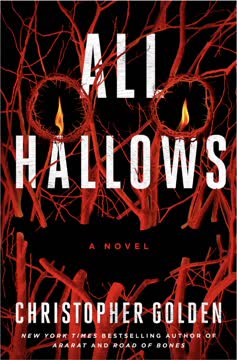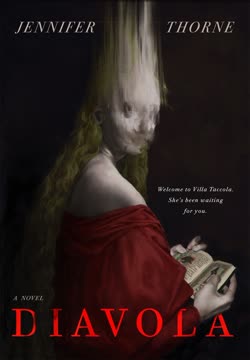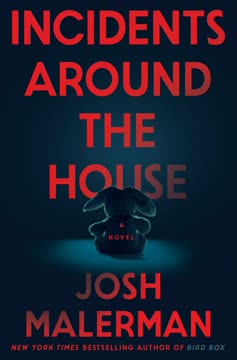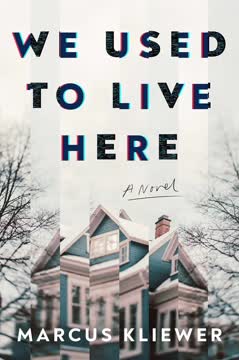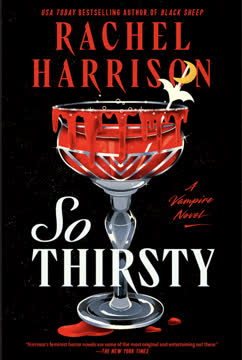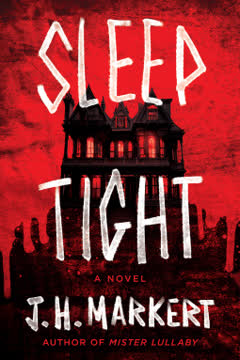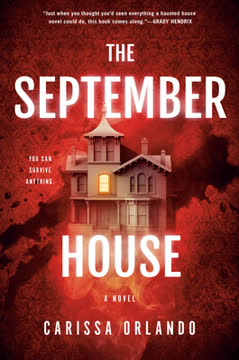Plot Summary
Haunted Woods' Last Night
Tony Barbosa and his daughter Chloe prepare for the final year of their legendary Haunted Woods, a charity event that has become the heart of their neighborhood's Halloween. The woods are alive with anticipation, but beneath the surface, Tony's family is unraveling—financial troubles, marital strain, and the looming loss of their home. As they set up the scares, Tony clings to the fleeting joy of this tradition, hoping to create one last perfect memory with Chloe. The air is thick with nostalgia and dread, as the night promises not just frights for visitors, but a reckoning for the Barbosas themselves.
Fractured Families, Hidden Wounds
Across Parmenter Road, families prepare for Halloween, but beneath the costumes and decorations, wounds fester. The Sweeneys' marriage is crumbling under Donnie's infidelity and alcoholism, while Barb struggles to hold her children together. The Montez family, loving but out of place, and the Koenigs, hosting a block party, each mask their own anxieties. Teenagers like Vanessa and Steve seek escape in friendship and rebellion, but the adults' secrets cast long shadows. The night's festivities become a fragile veneer over heartbreak, resentment, and longing for connection.
Trick-or-Treaters and Terrors
As dusk falls, kids flood the streets in costume, eager for candy and adventure. Rick Barbosa and his friend Billie navigate the neighborhood, trading candy and banter, but sense something off—a strange scarecrow boy, a lost little girl, and a growing unease. The usual mischief is tinged with something darker, as rumors swirl about the Burgesses, newcomers with a sinister reputation. The line between innocent fun and lurking danger blurs, and the children's laughter is soon pierced by cries for help.
Secrets Behind Closed Doors
While children roam, the adults' secrets boil over. Barb Sweeney's search for her husband exposes his affairs and her own breaking point. Alice Barbosa's infidelity is revealed in a public, humiliating confrontation. The Koenigs' party becomes a stage for bigotry and cruelty, shattering friendships and trust. As the night deepens, the facades crumble—marriages implode, parents fail their children, and the neighborhood's sense of safety is shattered. The real horrors are not in the woods, but in the living rooms and bedrooms of Parmenter Road.
The Children Who Don't Belong
Amid the trick-or-treaters, a handful of odd, out-of-time children appear—Raggedy Ann, a scarecrow, a clown, and a boy named Leonard. They seem lost, frightened, and desperate, but their presence is unsettling. They whisper of being hunted, of needing to hide until midnight, and of a monstrous figure called the Cunning Man. The neighborhood kids are drawn into their orbit, unsure whether to help or flee. The boundaries between the living and the lost, the real and the supernatural, begin to dissolve.
Monsters in the Neighborhood
The night's dangers are not just supernatural. Rick and Billie witness the Burgesses luring a child into their home, confirming the worst rumors. Their attempt to rescue him spirals into violence, as the children become both heroes and targets. Meanwhile, the strange children's true natures emerge—victims and predators, both haunted and haunting. The woods become a battleground, with the innocent and the monstrous indistinguishable in the dark.
The Cunning Man Arrives
As midnight approaches, the Cunning Man—a spectral, inhuman figure with burning eyes—enters the neighborhood. He hunts the witch's children, the lost ones who steal others to escape their own damnation. His presence warps reality, driving adults mad and turning the woods into a place of primal terror. The children, both living and dead, are drawn inexorably toward the Blackthorn tree, where the final reckoning will occur. The Cunning Man's arrival signals that the old rules no longer apply.
Nightmares in the Woods
The Haunted Woods, once a place of safe scares, becomes a true nightmare. The witch's children—Delilah, Leonard, Arthur—reveal their monstrous forms, hunting for sacrifices to appease their mother in the otherworld. The living children are pursued, betrayed, and forced to fight for their lives. Parents searching for their kids encounter horrors beyond comprehension, and the line between victim and monster blurs. The woods are alive with screams, both human and inhuman.
Betrayals and Broken Trust
In the chaos, old wounds are reopened. Steve's betrayal of Vanessa's secret leads to heartbreak and violence. Julia Sweeney confronts her father's sins and her own identity, finding unexpected courage. The Barbosas and Sweeneys must face the consequences of their choices, as love and loyalty are tested to the breaking point. The children, abandoned by the adults meant to protect them, must rely on each other to survive.
The Witch's Children Hunt
As the Blackthorn's midnight approaches, the witch's children become desperate. They turn on each other and the living, seeking to drag someone—anyone—through the gate to the otherworld. Sacrifices are made, and the cost is high. Rick is killed and transformed, Billie flees in terror, and Julia and Vanessa are nearly lost. The dead children's stories are revealed—once victims themselves, now cursed to perpetuate the cycle of horror.
The Blackthorn's Midnight Gate
All paths lead to the Blackthorn tree, where the barrier between worlds is thinnest. The Cunning Man battles the witch's children, and the living fight for their souls. Sacrifices are demanded, and not all will survive. Parents and children are reunited and torn apart. The supernatural horror is met with human courage and love, but not without devastating loss. The gate closes, but not before claiming its due.
Sacrifice and Survival
In the aftermath, the survivors count their dead—Rick, Steve, the Burgesses, Donnie Sweeney, and the lost children. The neighborhood is forever changed, innocence lost. Yet, in the face of horror, acts of bravery and compassion shine through. Julia and Vanessa find each other, the Barbosas cling to what remains of their family, and the Sweeneys begin to heal. The cost is terrible, but the survivors refuse to let the darkness define them.
The End of Innocence
The events of Halloween night mark a point of no return. The children of Parmenter Road are forced to grow up, their illusions shattered. The adults, too, must reckon with their failures and grief. The Haunted Woods is dismantled, families move away, and the neighborhood's sense of safety is gone. Yet, in the ruins, new bonds are formed, and the survivors carry forward the lessons of love, loss, and resilience.
Grief in the Aftermath
The days after Halloween are filled with funerals, police investigations, and unanswered questions. The supernatural is dismissed as trauma and madness, but those who lived through it know the truth. The Barbosas prepare to leave their home, the Sweeneys struggle to find peace, and the Montez family supports Vanessa through her recovery. Grief is everywhere, but so is the determination to endure.
The Cost of Secrets
The neighborhood's secrets—infidelity, abuse, prejudice—are exposed, but the supernatural horror overshadows them. Some truths are buried for the sake of survival, while others are finally spoken aloud. The survivors must decide what to remember and what to let go. The cost of silence and the price of honesty are weighed, as the community tries to move forward.
Hope Beyond Halloween
As autumn fades and the Haunted Woods is packed away, the survivors look to the future. The Barbosas leave Parmenter Road, but carry Rick's memory with them. Julia and Vanessa, scarred but alive, find hope in each other. The Sweeneys, broken but together, begin to heal. The horrors of All Hallows' Eve will never be forgotten, but the strength to endure—and to love—remains.
Characters
Tony Barbosa
Tony is the heart of the Barbosa family and the creator of the Haunted Woods, a man who clings to tradition and family even as his world unravels. His love for his children, especially Chloe and Rick, is fierce, but he is haunted by financial failure and marital betrayal. Tony's journey is one of loss and resilience—he must face the supernatural horror that claims his son and the emotional devastation of his wife's infidelity. In the end, Tony's courage and willingness to sacrifice for others define him, even as he is forced to let go of the past and seek hope in the future.
Barb Sweeney
Barb is a mother fighting to hold her family together as her marriage to Donnie collapses under the weight of his alcoholism and affairs. Her strength is tested by humiliation, violence, and the supernatural terror that invades her home. Barb's relationship with her children is complex—she is both nurturing and brittle, struggling to balance honesty and protection. Her journey is one of painful awakening, as she learns to put her children's needs above her own heartbreak and to find a way forward after unimaginable loss.
Chloe Barbosa
Chloe is Tony and Alice's teenage daughter, fiercely loyal to her family but deeply wounded by their unraveling. She shares a special bond with her father through the Haunted Woods, but is forced to confront her mother's betrayal and her brother's death. Chloe's resilience is tested as she becomes both victim and survivor, dragged into the supernatural conflict and forced to fight for her life. Her journey is one of growing up too fast, learning to forgive, and finding strength in the face of horror.
Rick Barbosa
Rick is the younger Barbosa child, a boy on the cusp of adolescence, eager for adventure but unprepared for the darkness that finds him. His friendship with Billie is a source of joy, but he is drawn into the orbit of the witch's children and ultimately becomes a victim of their curse. Rick's transformation into a monster is both literal and symbolic—the loss of innocence, the cost of secrets, and the pain of being failed by the adults meant to protect him. His death is the story's emotional fulcrum, shattering his family and the neighborhood.
Vanessa Montez
Vanessa is a Dominican-Vietnamese teenager, punk and proud, who feels alien in her white suburban town. Her friendship with Steve is her anchor, but she yearns for something more—acceptance, love, and the freedom to be herself. Vanessa's journey is one of self-discovery and courage, as she comes out to her parents and finds unexpected love with Julia. She is both a witness to and a survivor of the night's horrors, her resilience and compassion shining through even as she is wounded by betrayal and loss.
Julia Sweeney
Julia is Barb and Donnie's eldest, a girl hardened by her parents' dysfunction and her father's cruelty. She is fiercely protective of her siblings and friends, but struggles with her own identity and the weight of her family's secrets. Julia's journey is one of transformation—she confronts her father's sins, claims her love for Vanessa, and faces supernatural terror with unexpected bravery. Her arc is about reclaiming agency, finding love, and refusing to be defined by the failures of her parents.
Donnie Sweeney
Donnie is the Sweeney patriarch, a man whose charm masks deep selfishness, addiction, and infidelity. His failures as a husband and father are laid bare, and his eventual possession by the Cunning Man is both punishment and poetic justice. Donnie's arc is a descent—he becomes the literal monster haunting the neighborhood, but in his final moments, a flicker of love for his children remains. He is both a cautionary tale and a tragic figure, undone by his own choices.
Billie Suarez
Billie is Rick's best friend, a girl who shares his adventures and becomes his confidante. She is brave and resourceful, but traumatized by the violence she witnesses and the loss of Rick. Billie's journey is one of survival and grief—she must process the horror of what she has seen and find a way to move forward. Her loyalty and love are her defining traits, and her pain is a testament to the cost of innocence lost.
The Cunning Man (Broghan)
The Cunning Man is the supernatural force that stalks the witch's children, a being of fire and rot, both avenger and predator. He is the embodiment of old-world horror, a force that punishes those who prey on the innocent. His possession of Donnie Sweeney is both a narrative device and a symbol—the sins of the father made manifest. The Cunning Man's presence warps reality, and his actions drive the story to its bloody climax.
Delilah, Leonard, Arthur (The Witch's Children)
These are the lost ones—children stolen by the witch Carmun, transformed into monsters who must steal others to escape their own damnation. They are both victims and villains, tragic and terrifying. Their psychoanalysis is one of trauma perpetuated—once innocent, now forced to become predators. Their relationships with each other are fraught with rivalry and desperation, and their interactions with the living are a twisted mirror of the neighborhood's own cycles of pain and betrayal.
Plot Devices
Interwoven Family Narratives
The novel uses a mosaic of perspectives—parents, children, friends, and monsters—to build a portrait of a neighborhood on the brink. Each family's secrets and struggles are revealed in parallel, their arcs intersecting as the supernatural threat emerges. This structure allows for deep psychological exploration and a sense of inevitability, as the characters' personal demons are mirrored by the literal ones in the woods.
Liminal Time and Place
The story is set on All Hallows' Eve, a night when the boundary between worlds is thin. The Blackthorn tree serves as a literal and symbolic gate, and the witch's children can only act within this liminal window. The narrative uses foreshadowing—strange children, odd weather, broken technology—to build dread, and the supernatural is always just beneath the surface of the ordinary. The haunted woods, the lost children, and the Cunning Man all exploit this sense of in-betweenness.
Generational Trauma and Cycles
The plot is driven by cycles—of abuse, betrayal, and supernatural predation. The witch's children are both victims and perpetrators, forced to repeat the violence done to them. The adults' failures—infidelity, addiction, silence—echo in their children's suffering. The narrative structure uses repetition and mirroring (e.g., betrayals, lost children, haunted places) to reinforce the theme that what is not confronted is perpetuated.
The Monster Within and Without
The supernatural elements—witches, monsters, possession—are intertwined with the psychological horror of broken families and lost innocence. The Cunning Man's possession of Donnie literalizes the idea that evil is both external and internal. The witch's children are both the ghosts of the past and the consequences of present choices. The story blurs the line between human and monster, asking whether the real horror is in the woods or in the home.
Sacrifice, Survival, and Hope
The climax at the Blackthorn tree is a convergence of all plot threads—sacrifice, confrontation, and the closing of the gate. The narrative uses the structure of a folk horror ritual, with rules, bargains, and a price to be paid. The survivors are marked by loss, but the story ends with a glimmer of hope—new bonds, hard-won wisdom, and the refusal to let darkness define the future.
Analysis
All Hallows is a modern folk horror novel that uses the trappings of Halloween to explore the darkness at the heart of suburban America. Christopher Golden weaves together supernatural terror and domestic drama, showing how the monsters we fear are often reflections of our own failings and secrets. The novel's structure—interlocking family narratives, a single night of escalating horror, and a convergence at a liminal gate—mirrors the cycles of trauma and the struggle to break free. The witch's children are both literal and symbolic, representing the way pain is passed down and perpetuated when left unspoken. The Cunning Man, as both avenger and destroyer, embodies the consequences of ignoring evil, whether in the home or the world. Ultimately, the novel argues that survival is possible, but only through honesty, courage, and the willingness to face the truth. The cost of secrets is high, but hope endures in the bonds we forge and the love we refuse to relinquish, even in the face of horror.
Last updated:
Review Summary
All Hallows received mixed reviews, with ratings ranging from 1 to 5 stars. Many readers appreciated the nostalgic 1980s Halloween atmosphere and well-developed characters. However, some found the pacing slow and the multiple POVs confusing. The book was praised for its creepy elements and unexpected plot twists, but criticized for not being scary enough. Some readers felt the domestic drama overshadowed the horror elements. Overall, it was considered a good entry-level horror novel with strong character development and atmosphere.
